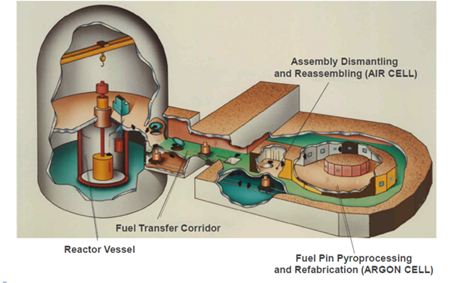Making the case for nuclear’s global role in the sustainable energy landscape
In the global energy and climate crises many countries have come to consider that nuclear power has a positive role to play. In fact, nuclear power is a quasi-indigenous energy source already helping energy security without CO2 emissions.
Yet Vaclav Smil, of Canada’s University of Manitoba, says: “Nuclear is successful failure!” Its performance betrays the high expectations, while huge resources have already been spent on its development.
Even the doubling of nuclear power by 2050, within the IEA’s Net Zero by 2050 scenario, seems very modest relative to the speed of past energy transformation by coal, oil and natural gas, as well as the expected growth of renewables in coming years.
Aspects for consideration
There are four issues to consider to make nuclear power sustainable.
First is cost. While the cost of renewable energy has been declining fast, costs for building new nuclear reactors are increasing.
Current prevailing reactors are large light water reactors - and they seek economy of scale by enlarging capacity. However, due to delays in construction time and severe safety standards, some European large light water reactors cost more than $30 billion.
Making nuclear viable
So can nuclear be competitive against renewables without government support measures?
Small Modular Reactors (SMR) make more sense in order to reduce the initial cost of construction and pave the way for use by the steel industry or data centres. It is standardisation, and not enlarging capacity, that reduces the cost of construction. While building new reactors is costly, the IEA and NEA say that the cost of operating current reactors is competitive.
That’s why some governments, including Japan, are extending the legal life of operating reactors by over 40 years, up to 80 years.
Ensuring safe operation
The second issue is safety.
Nuclear power has experienced a series of large accidents: Three Mile Island in 1979, Chernobyl in 1986, and Fukushima in 2011.
These events caused hostile public reaction and undermined the healthy development of nuclear power. Human error is inevitable, but the impact of accidents can be limited by introducing SMRs because an Emergency Planning Zone can be contained within the plant. One of the key characteristics of SMRs is passive safe technology.
A condo without a toilet
The third issue is radioactive waste disposal.
Finland, Sweden and France have determined their final waste disposal sites. Other countries, including Japan, haven’t any concrete disposal plan. Spent fuels are temporally stored in the cooling pools of nuclear plant sites and will likely face a shortage of space in the near future. The public is very concerned about the lack of disposal sites, commenting that: “Nuclear is a condominium without a toilet.”
Negative nuclear outlooks
The fourth issue is proliferation risk.
The Russian invasion of Ukraine and Putin’s threat of a possible use of nuclear weapons encourages non-nuclear weapon states to acquire one. The current large light water reactor paradigm is proliferation-prone because it needs the uranium enrichment process for fuels and reprocessing of spent fuels, producing plutonium - both of which are weapons technology.
Tried and tested

Is there technology which satisfies these conditions?
Yes, there is: the Integral Fast Reactor of the Argonne/Idaho National Laboratory in the US.
The reactor is a sodium-coolant fast neutron reactor with pyro-processing and proved its passive safety in a 1986 experiment. As a closed system it is difficult for terrorists to seize plutonium. Pyroprocessing makes it more difficult to reprocess pure plutonium for weapon use, because it separates highly radioactive minor actinides together with Pu. It is proliferation resistant.
The final radioactive waste of the IFR diminishes its toxicity within 300 years, much shorter than the spent fuels period of 100-300,000 years. To find the disposal site would be much easier.
Applied in real life
This technology is applicable to the melt-down debris of the Fukushima Daiichi NPP. Debris cannot be transported out of Fukushima prefecture, but a 300-year storage site can be developed in Fukushima. If this is tested successfully in Fukushima, it can be applied to any NPP site in Japan.
This SMR will be developed as a “nuclear incinerator”. Korea is interested in this technology. And the US-Japan-Korea coalition after the Camp David summit last year decided it should develop this IFR together as a model of sustainable nuclear system.
Click here to register for and attend Japan Energy Summit & Exhibition, a catalyst for igniting change across the industry - including nuclear energy - and connecting the global energy community to Japan’s energy value chain.
Energy Connects includes information by a variety of sources, such as contributing experts, external journalists and comments from attendees of our events, which may contain personal opinion of others. All opinions expressed are solely the views of the author(s) and do not necessarily reflect the opinions of Energy Connects, dmg events, its parent company DMGT or any affiliates of the same.






